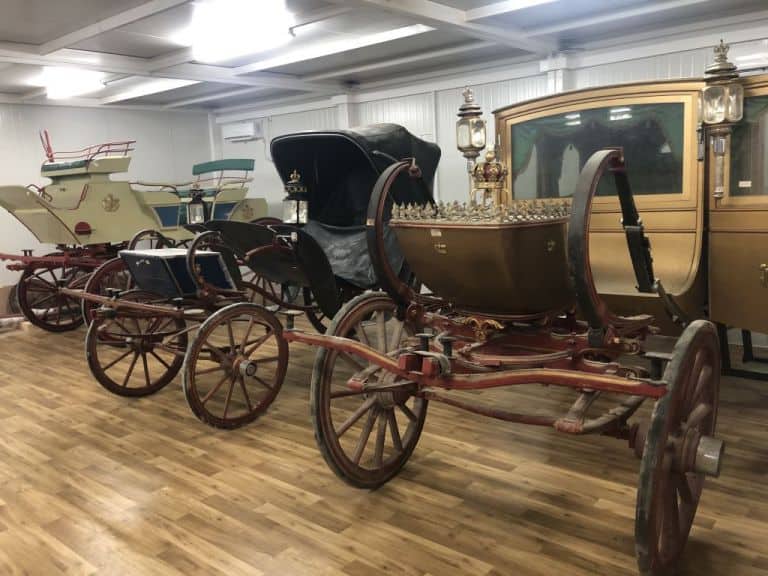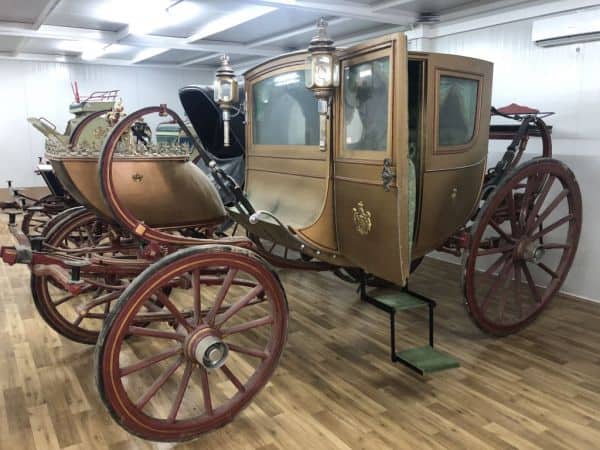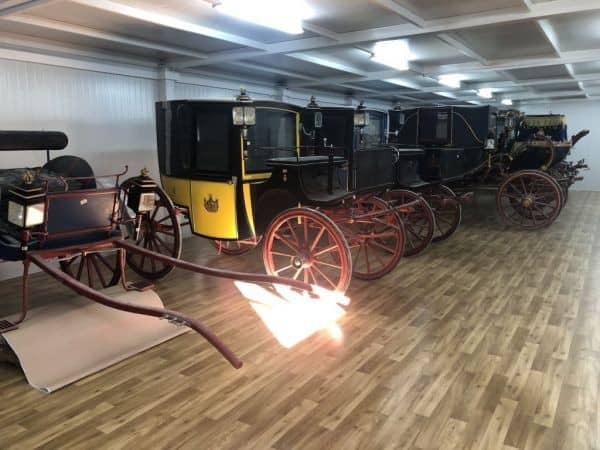Even though reign in Greece lasted for over a century (1832 – 1973), there are very few exhibitions or museums dedicated to the Greek royal family that one can visit today.
After many years of discussions about the exploitation of the former Tatoi Royal Estate and Palace, in 2019 the current Ministry of Culture decided to renovate the estate and all of its buildings and parks, to create a unique sight of attractions for locals and tourists.
Along with numerous spaces within the royal estate and objects that belonged to the royal family, such as clothes, jewels, cars, and many other relics, restoration of the numerous royal carriages has already begun.
A large number of well-kept carriages were hosted at Voustasio (the royal stables) for a few decades, and were not accessible to the public.
Along with mechanical and agricultural equipment and vehicles that were stored in the same building, the royal carriages were used for the transportation of the royal family, the royal guard and their guests.

On the 23rd of December of last year, the Minister of Culture and Sports, Lina Mendoni, visited the former royal estate of Tatoi to review the restoration of the palace, old royal carriages and cars, and applauded the rapid progress of the project.
Throughout the palace halls and the stable, a plethora of old furniture, pieces of art, sculptures and paintings, and even toys were collected and restored, in order to be used for exhibition purposes in the imminent future. 1456 boxes and chests were also collected for restoration, most of which were locked and carried numerous heirlooms that the royal family left behind.
The Directorate for the Preservation of Ancient and Modern Monuments of Greece (DSANM) lead the evacuation of all estate buildings, which required special care and attention, as numerous objects were fragile or were found partly damaged, after the reign in Greece was dissolved in the 1970s.
All of the items were also evaluated by the Directorate of Modern Cultural Heritage, and most of the objects were packed and safely transferred to a new storage space inside the estate for restoration.
Several other items that were found damaged and were assessed as non-valuable, so were discarded and removed from the estate.

Twelve carriages of the former royal family that had remained in great state, were transported and placed in a new storage space, designed by the DSANM with modern specifications, under safety and protection storage conditions.
Royal antique cars were also placed in that same space over the summer of 2020, and underwent extensive restoration in order to be also presented in exhibitions within the Tatoi estate.
The DSANM additionally reported that all carriages went through “emergency rescue operations” by the Directorate’s maintenance team, “to temporarily retain and protect the peeled paint layers and remove dirt and loose deposits, after a long stay of 52 years in the stable inside the building.”


Out of all the carriages, two were deemed to be the most important, for historical reasons, but also because of their architecture and detailed design.
The first one is a closed-up, coach type carriage, which was used at the wedding of Queen Sophia of Spain, wife of the former King of Spain, Juan Carlos I. The carriage was specifically designed for their wedding and the unification of the two Kingdoms, and was purchased by King George I in 1871.
The second one, is an open, landau type carriage, which was used for the wedding of the former King Constantine II and Princess Anne-Marie of Denmark. The wooden carriage is decorated with gold and metallic details and is covered with blue and burgundy embroideries. A large golden emblem of the Greek royal family is also attached on the carriage and reads: “My Strength is the Love of the People” (Ισχύς μου η Αγάπη του Λαού).
Numerous other coupés, Phaethon-style carriages, trailers and chariots are also included in the collection.


The Minister of Culture reportedly demanded the strict observance of all procedures, the acceleration of the performed transportation, detailed recordings of all items and storage works, as well as the continuous and uninterrupted operation of the construction sites. Moreover, with the Royal Palace, the works of waterproofing the roof and covering up the wooden floors for further protection have already been completed.
According to a recent announcement by the DSANM “the detailed documentation and maintenance procedures continue normally. The entire area of the Tatoi estate, which is about 42 km2, is being transformed, new trees have been planted and more green park spaces are being created.”
The budget for this restoration has reached 1.4 million euros at the moment, and it is expected that the Tatoi estate will be ready to welcome visitors in May 2021.






Photo credit: All photos by the Greek Ministry of Culture and Sports
Mossialos: When 70% of the population are vaccinated we can move on from restrictions
